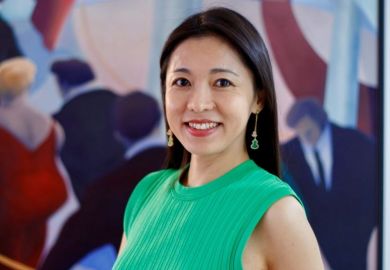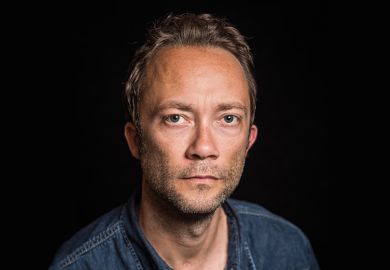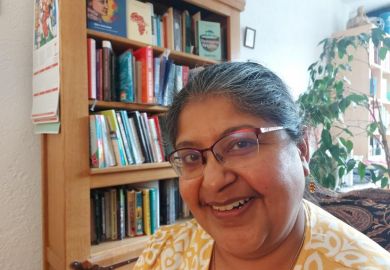Brendon Bradley is professor of earthquake engineering at the University of Canterbury, where he also heads the New Zealand Centre for Earthquake Resilience. The structural earthquake laboratory he oversees, the biggest in the southern hemisphere, tests the impacts of temblors of varying intensity on entire walls and even buildings.
Where and when were you born, and how has that shaped who you are?
In 1986 in Blenheim, in the wine country four hours north of Christchurch. I did a lot of sports. I represented New Zealand at inline hockey – hockey on roller skates – for a few years before I started university.
Were you a studious child?
Neither of my parents went to uni. My father was a lathe machinist in the air force and my mother worked odd jobs. I never really got exposure to the idea that if I studied well and got good grades, it would set me up for life. I was a pretty mediocre student until the last five or so years of schooling when I found something to channel my energy – being put forward a year in mathematics when I was about 14. It was my first chance to be really challenged and pushed out of my depth. That sort of started a cascade. It led to me putting in the hours to master some of those massive science subjects.
You completed your PhD quickly and became one of New Zealand’s youngest ever professors at 29. What fuelled the change from fast skater to fast scholar?
I’m never content with climbing a little peak; I’m always looking for the next challenge. In academia, you get kicked a lot. The first paper I sent to an academic journal, when I was an undergrad student, got rejected. It was an extremely harsh lesson about not submitting something just because your supervisor says it’s fine; you have to be satisfied with it yourself. Anyway, those sorts of things didn’t faze me at all. You carry on and just keep pushing.
Blenheim is known more for its Sauvignon Blanc than its seismicity. What triggered the interest in earthquakes?
During my second-last year as an undergrad I had the opportunity to work at the university in a research internship over the summer. That got me really excited about the unbounded nature of research and the fact that you can tackle a problem that someone really hasn’t done before. That made it quite clear I should carry on to postgraduate research. In structural and geotechnical engineering, earthquake engineering is the frontier – it has by far the hardest phenomena to address.
Christchurch suffered catastrophic earthquakes just months after Canterbury hired you. What did that mean for your field?
As they say, never waste a good disaster. You can make a huge impact while there’s public and policy appetite to make changes in the immediate aftermath of a catastrophe. A few things enabled New Zealand, and Christchurch in particular, to become a global hub for earthquake engineering and resilience research. Although we had a lot of New Zealand expertise, we worked hard at getting the best and brightest people from all over the world after those events. You want a lot of people on the ground to collect perishable data that’s going to be lost within days, weeks or months. New Zealand did a great job of making that data open and available. That generated a snowball effect whereby the more data that became available the more attractive it was for people to come and do research. Funders recognised the opportunity to get huge mileage. We had a golden decade where all the settings were right.
How did you choose where to focus your energies?
We had far fewer experts than problems we needed to address. You either stick to the things you know well, and leave a lot of aspects neglected, or – for a short period – you try and cover a lot of things, which stretches you thin but addresses all the issues that are relevant to a recovering society. You need to find that balance between assisting rebuilding and recovery while also working on fundamental problems, so you’re not just essentially doing applied consulting.
Did the city appreciate your efforts?
Yes, but it wasn’t the only beneficiary. Most good research, certainly in applied areas such as engineering, comes from a tight feedback loop between the research being done and the impact it has. It’s only by working at the coalface on the most challenging problems that you really learn where the research gaps are. That tight connection with the community ultimately improves the research. Engaging with the community didn’t mean we couldn’t do as much good research – it was the opposite.
You describe the aim of your work as making earthquakes ‘just a nuisance’. Is that really feasible?
We won’t have to be fearful of earthquakes in the future. We’ll feel the shaking and then just go about our business again. There’s a pretty clear path, in my mind, for that transformation. I don’t mean to trivialise it; it’ll take several decades. We have to replace the building stock and improve the current technologies to make them more cost-effective, and so forth. But earthquake engineering is only about 100 years old, and we’ve come a huge way. There’s no reason to think that we’re suddenly going to stagnate.
What do you like about academia?
Educating the next generation of students who are really inspired to learn. When new cohorts of students keep coming in there’s a sort of vitality that makes you feel young, even though you’re continuing to age. I particularly enjoy working closely with the students I supervise. They arrive not knowing how to conceptualise a research question or do certain technical things. By the time they graduate with PhDs, for example, they’re masters of their trades. That’s personally rewarding. And I love the creativity of research in a discipline like engineering. A lot of sentiment about engineers is that they’re very analytical and things are black and white. But doing research is ultimately a creative process where you think about things slightly differently. In that regard, engineering research is as much an art as a science.
What do you dislike about academia?
Many people benefit hugely from university – clearly the overwhelming majority – but we get a large fraction of people who are there for the certification, not the education, and that’s largely because the people around them have implicitly signalled to them for a long time that success means going to university. It’s not necessarily a fault of academia, although how we choose to market ourselves probably plays a part.
john.ross@timeshighereducation.com
CV
2004-06 Bachelor of engineering with honours, University of Canterbury, Christchurch
2007-09 PhD, Canterbury
2009-10 Seismic hazard modeller, Institute of Geological and Nuclear Sciences, Wellington
2010-11 Postdoctoral fellow, Chuo University, Tokyo
2010-present Founding director, Bradley Seismic Limited, Christchurch
2010-14 Lecturer and senior lecturer, Canterbury
2014 New Zealand Young Engineer of the Year
2015 Associate professor, Canterbury
2016 New Zealand Prime Minister’s Emerging Scientist Prize
2016-18 Deputy director, QuakeCoRE: The New Zealand Centre of Earthquake Resilience
2016-present Professor, Canterbury
2019-present Director, QuakeCoRE
Appointments
Sir Ed Byrne will be the next president of Saudi Arabia’s King Abdullah University of Science and Technology (KAUST). The neuroscientist, who was vice-chancellor of Monash University from 2009 to 2014 and then principal of King’s College London from 2014 to the end of 2020, will replace Tony Chan at KAUST next month. Previously, he was dean of Monash’s Faculty of Medicine and vice-provost (health) at UCL. “It is an honour to join an academic community at the forefront of translating research into economically productive innovations for the benefit of society,” Sir Ed said.
Helen Scott is joining the University of Stirling as deputy principal for education. Currently pro vice-chancellor for learning, teaching and student success at Sheffield Hallam University, she will take up the post in November, following the retirement of Leigh Sparks. Stirling has also hired Paul Townsend, currently pro vice-chancellor and executive dean for the Faculty of Health and Medical Sciences at the University of Surrey, as its next deputy principal for research and innovation, succeeding Judith Phillips. Principal Sir Gerry McCormac said both “rightly command huge respect in their fields”.
Melinda Fitzgerald has been confirmed as deputy vice-chancellor for research at Perth’s Curtin University, having held the post on an interim basis since June 2023.
Helen Driscoll has been appointed pro vice-chancellor (learning and teaching) at the University of Sunderland, after holding the role on an interim basis for six months.
Maureen McLaughlin will be Aston University’s first chief student officer. She was previously academic registrar and director of student, library and academic services at Northumbria University.
Kira Stoll has been named inaugural chief sustainability officer and executive director of the Office of Sustainability at the University of California, San Francisco.
Anne Nortcliffe is joining Wrexham University as dean of its Faculty of Arts, Computing and Engineering. She was previously founding head of the School of Engineering, Technology and Design at Canterbury Christ Church University.
Register to continue
Why register?
- Registration is free and only takes a moment
- Once registered, you can read 3 articles a month
- Sign up for our newsletter
Subscribe
Or subscribe for unlimited access to:
- Unlimited access to news, views, insights & reviews
- Digital editions
- Digital access to THE’s university and college rankings analysis
Already registered or a current subscriber?






